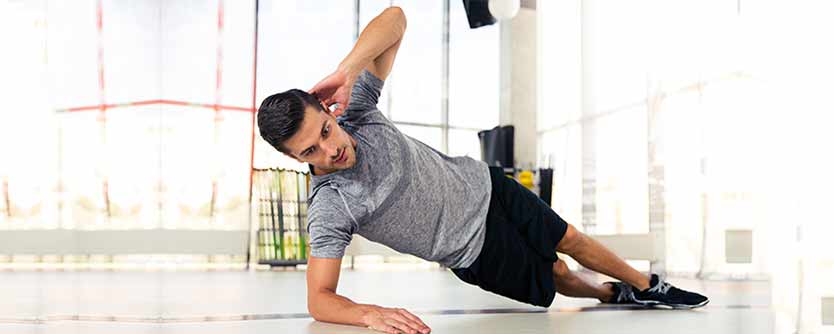Are you a fitness freak who spends hours training hard and eating right, and yet doesn’t see satisfactory results because of your poor core?
[the_ad id=”6114″] Renowned health researchers and experts have suggested that when our gut health is poor, it can impair our immune system and nervous system, and majorly disrupt the hormonal functions of our body. This is mainly because our gastrointestinal tract is embedded with neurons that release the same neurotransmitters that are found in the brain.
However, with a stronger core, we can maintain a better body posture, lower the risk of back pain, improve balance and stability, and perform our daily tasks faster and by using less body energy. This would, in turn, imply that our performance in the gym, along with the results are likely to be better. Since many of the core exercises don’t require specialized equipment or a gym membership, you can also do them at home, by yourself.
So, whether you are looking for self-gratification by improving your body shape, or wanting to improve your general health, it is imperative that you include some exercises in your usual training that target your core strength.
Below is a list of some easy exercises that you can easily include.
- Abs Exercises
You can simply start by including 2 – 3 sets of exercises that focus on your abdominal muscles, which will help stabilize your body to a great extent. The point here to note is that you must maintain a good posture in order to render best results.
One of the exercises is, contracting your stomach muscles by deep breathing and then flexing your stomach muscles in a downward direction for a few second before exhaling. It is a really simple exercise and you can easily do five to six sets each day.
Another exercise is to lie face down with your arms and legs stretched outward. Then you have to raise your right arm and left leg off the ground as far as you are comfortable with. The same can be repeated with the opposite arm and leg.
- Free Weights
Any exercise that involves the use of your abdominal and back muscles in coordinated fashion counts as a core exercise. One way is to use free weights in a manner that involves maintaining a stable trunk. Exercises like this can train and strengthen several of your muscles, including your core muscles.
- Breathing
How you breathe can impact your pelvic floor, strengthen your core, and affect your overall well-being. Most of the fitness experts recommend shallow chest breathing in which one has to focus on his/her breath. The key here is to ensure that your stomach moves as you inhale and exhale. With focused breathing exercises, eventually your stomach muscles will become stronger, and you will feel more relaxed.
- Bridge
A bridge is a classic core exercise, in which you have to lie on your back with your knees bent. In this particular posture, you have to keep your back in a neutral position, not arched or pressed into the floor. You need to also avoid tilting your hips or tighten your abdominal muscles. All you have to do is to raise your hips off the floor until your hips are aligned with your knees and shoulders, and hold the position for as long as you can without breaking your form.
- Fitness Ball Exercises
You can use a fitness ball to break the monotony of your exercise routine. For instance, you can kneel in front of a fitness ball with your knees, hip-width apart, then place your forearms on the ball, hands in loose fists. Keeping your back flat, you can brace your core and slowly roll the ball away from you by straightening your arms and extending as far as you can without allowing your hips to drop. You can also bend your elbows to roll the ball back to start.
- Planks
Planks strengthen your entire body by strengthening your lower back and core and building your shoulders. You can easily watch videos online or check with your trainer on how to perform planks. However, if you find it difficult to hold the posture, a good idea is to start by practicing a bent-knee plank. You can do this by simply raising one leg in the air, and increasing the demand on your core to fight your body’s natural urge to rotate. This will help you slowly progress into doing harder variations of a plank.
Source:

